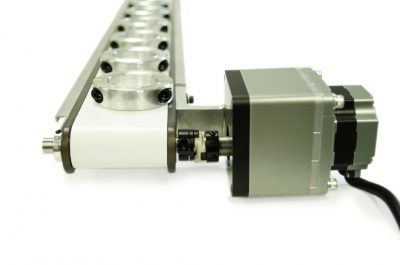Oldham Offers Couplings for Conveyor Systems

Oldham couplings from Ruland are zero-backlash, have a balanced design, accommodate large parallel misalignment, and are highly versatile, making them an ideal fit for precise positioning and general industrial conveyor systems. They also facilitate easy disassembly of rollers to allow for cleaning, replacement and general maintenance.
Ruland oldham couplings are comprised of two anodized aluminum hubs and a torque transmitting center disk. This allows a single coupling to combine clamp and set screw hubs with inch, metric, keyed and keyless bores. Ruland uses a proprietary hub machining process that leaves a smoother surface for interaction between the hub and disk, resulting in long life and reduced downtime. Oldham couplings from Ruland have a balanced design for reduced vibration at high speeds. Modular conveyor systems benefit from a standard coupling that can be installed on different motor, shaft and roller configurations including blind assemblies.
Torque transmission is accomplished by mating the slots on the center disk to the drive tenons on the hubs. Oldham couplings accommodate all forms of misalignment, and are best suited for parallel misalignment. They operate with low bearing loads protecting system components such as bearings. The disk is available in acetal for high torsional stiffness, PEEK for high temperature and low outgassing, and nylon for shock absorption and noise reduction. In the event of wear or failure, the disk can be replaced, restoring the original performance characteristics. Oldham couplings are electrically isolating due to the non-conductive nature of the center disk. This helps prevent electrical currents from being passed to delicate instruments. They also act as a mechanical fuse in torque overload situations, with the disk cleanly breaking and stopping power transmission.
Bore sizes range from 1/8” (3 mm) to 1-1/8” (30 mm) and stainless steel hubs are available upon request for use in high corrosion or clean room environments. Disks can be manufactured with a center hole to allow further shaft penetration or tapped holes to attach the disk to a hub so it stays in place during disassembly.





